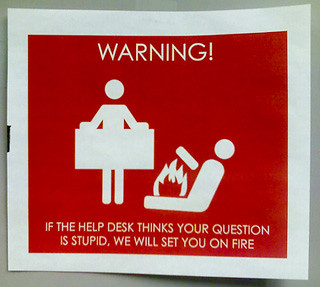
Make Your Clients Stakeholders
As a web writer you’ll quickly discover that some clients are easy to work with while others are a royal pain. The way I look at it, if you don’t have final text after one revision, your client isn’t giving you good input. And the last thing you want to do is get in to a “trial-and-error” situation where each draft is a roll of the dice.
So how do you tame these time-wasters? Make them stakeholders in the project.
The Discovery Phase
This is, perhaps, the most important part of the project. This is the time you determine what the client wants and what his or her expectations are.
Who is the text targeted at? What is the purpose of the text and what’s the most desired action or MDA? Get the client to commit to these basics in writing. You can do that by preparing a statement of work (SOW) or by asking the client to spec the job for you. This is even better. A client who puts it in writing is already a stakeholder, though you’re far from a smooth-sailing assignment. Even with specs in writing, some clients are more than happy to change the project parameters, aka, project creep.
This usually takes the form of “just one more little thing” or “would you mind re-writing the second half of the book in a more technical style?” You’ve got a problem.
Get Approvals
I always prepare a “reaction piece” – a short body of text designed for all stakeholders to tear to shreds. Wrong tone. (Or right tone!!! Yay!!), scope is too broad or narrow, too much tech talk, etc.
It’s a good idea to ask the client to track changes on the approval piece and to insert comments where appropriate and changes as required. This forces the client to think about changes. Further, by making recommendations for change, you’ve created a stakeholder. That client isn’t going to ask for changes to his or her own idea or concept.
Again, get it in writing. The ideal? A marked up red-line of the reaction piece with lots of notes. This is your road map to a short and sweet project and a happy client who’s put his nose on your baby.
Get More Approvals
If the project involves a lot of text – an e-book for example – submit your work chapter by chapter. This way, the client can be calling for revisions on previously-written chapters without slowing you up.
Be aware that some clients don’t know what they want until they see it or read it. That’s why it’s essential to keep the client involved throughout the content creation process. This prevents extensive re-writes at the precise time the project should be finished.
Communicate
A time-wasting client is costing you money. Time is money and if you’re rewriting text over and over, you’re losing money. It’s as simple as that.
If you find yourself working with a client who is totally clueless, time for a chat. Don’t accuse. Don’t be angry or annoyed. Simply explain that you have a schedule and that the project must be finished in order for you to move on and get to work on the next assignment.
Most professionals will understand your dilemma and do their best to wrap things up quickly. However, you run in to the occasional prima donna who thinks his $300 bought you for life. It’s important to keep clients happy but you don’t owe them 20 revisions for $300.
Know when to draw the line. Know when to walk away. If you can’t make the client commit, if you can’t make the client a stakeholder, you’re better off walking away from the job.
This is NOT the kind of client you want to add to your regular client base.

No comments:
Post a Comment